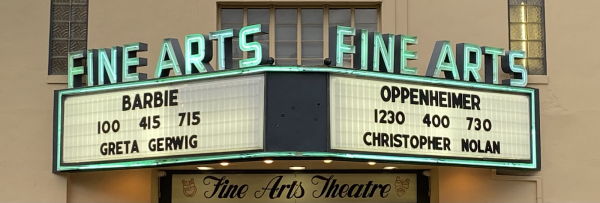Is Summer Reading Too Intense?
These are some of the books the middle school students read this past summer.
“She climbed up on the chair, her eyes staring in front of her like sleepwalkers…She adjusted the noose round her neck. Hugo was there to see she did what she had to do. She kicked away the chair….”
– Agatha Christie, And Then There Were None
Everyone wants the best summer possible, but assigned reading is the last thing many students want over the break. Every year at TBS, each grade is assigned summer reading by their English teachers. However, are the assigned books in the Middle School age appropriate for young teens and tweens?
And Then There Were None, referenced above, is considered one of the great thrillers of all time and tells the tale of 10 strangers, each invited to Indian Island by a mysterious host. Once the guests arrive, their host accuses each one of murder. With no way to leave the island, these individuals begin to share their deepest and darkest secrets, that is, until they begin to die.
For many rising eighth graders, this book is disturbing and unsettling because of the nature of the murders. “The motif is death,” said eighth grader Shang Wang, “and it was really creepy.”
Even past students still recall being affected by the novel’s eerie tone. “I felt that the novel was very intense because of how cleverly the antagonist planned the mass murder on an island of ten occupants,” said freshman Briley Crisafi. “Christie’s style of writing is brilliant and enjoyable, thus I can see why Benjamin’s English Department would select this piece of literature to be studied, dissected, and admired. However, I feel it was slightly too depressing – especially as a summer read – in addition to the other somber and quite gory works the eighth grade analyzes throughout the year,” she said.
In addition, the sixth graders were required to read the New York Times bestseller Chains by Laurie Halse Anderson. This book of historical fiction tells the story of two young black girls who are slaves during America’s Revolutionary War. The abuse the girls experience at the hands of their owners was too intense for some of the sixth graders.
“In Chains it was very uncomfortable for me because there was a lot of beating, branding, and…Ruth gets sold without Isabel’s permission,” said sixth grader Madison Kittendorf, referring to the two young sisters who are the novel’s protagonists. “It was very uncomfortable for me, sometimes I had to stop reading the book at those parts because it got very emotional.”
“[Chains] just felt kind of dark, and I couldn’t really connect to the characters because I was afraid at every turn the main character was going to die and I would start breaking out sobbing,” said fellow sixth grader Ellie Bickel. “ If we read Chains with the teachers that would be okay because we could get more insight, or wait for seventh or eighth grade because we’d be more mature.”
Finally, one of the books assigned to the seventh-grade this summer was John Grisham’s A Painted House. Grisham, known for his legal thrillers aimed at adult audiences, tells the story of a young seven-year-old, Luke, who witnesses a murder in 1950s Arkansas in his latest novel. “Some parts of the book were a little inappropriate, like when Luke watches Tally [a 17-year-old girl] bathe,” said seventh grader Anthony Pace.
However, Middle School English Department Chair Mrs. Kathleen Devine saw no issues with the summer reading. “I think the books were age appropriate for each of the grades, I really do,” she said. “[Choosing the books] is a collaborative decision. The English department meets, so that includes all of the English teachers, and we decide together on what books will be good for summer reading.”
Dean of Academics Dr. Tina James provided further insight into how the books are chosen. “What we do is for sixth, seventh, and eighth grade, the English teachers in that grade usually come to a consensus about what they would like to teach,” said Dr. James. “Then we check with the head of the English Department, Mrs. Devine, and she ultimately approves it, but unless there are some extraordinary circumstances, she usually approves what we decide on doing.”
Dr. James also said that Mr. Hagy usually doesn’t get involved with the summer reading choices. “[Mr. Hagy] really leaves our curriculum to us,” she said. “The only way he would become involved is if there was some reason he thought a book may not be age appropriate for someone, but that doesn’t come up that often.”
While the English Department uses its best judgment in choosing the summer reading books, some of the themes and scenes can be a bit intense. Well-written books have the potential to be a powerful form of both art and entertainment, and some students are not prepared for the emotional and psychological journey on which certain novels may take them. In addition, as adults whose childhood years are years behind them, it’s possible that some teachers forget how books can impact students. A good compromise may be, as Bickel said, to assign lighter reading over the summer and save the “heavier” material for in class where teachers can read it with their students and brace them for some of the more mature subject matter and elements.










